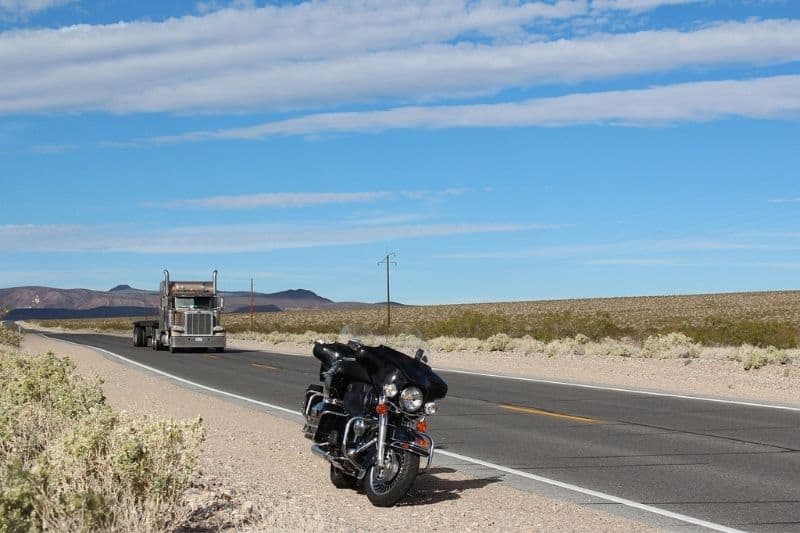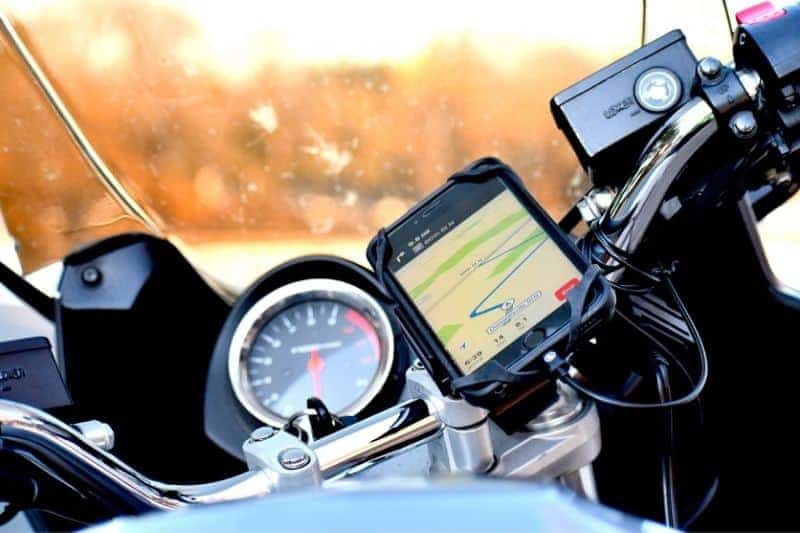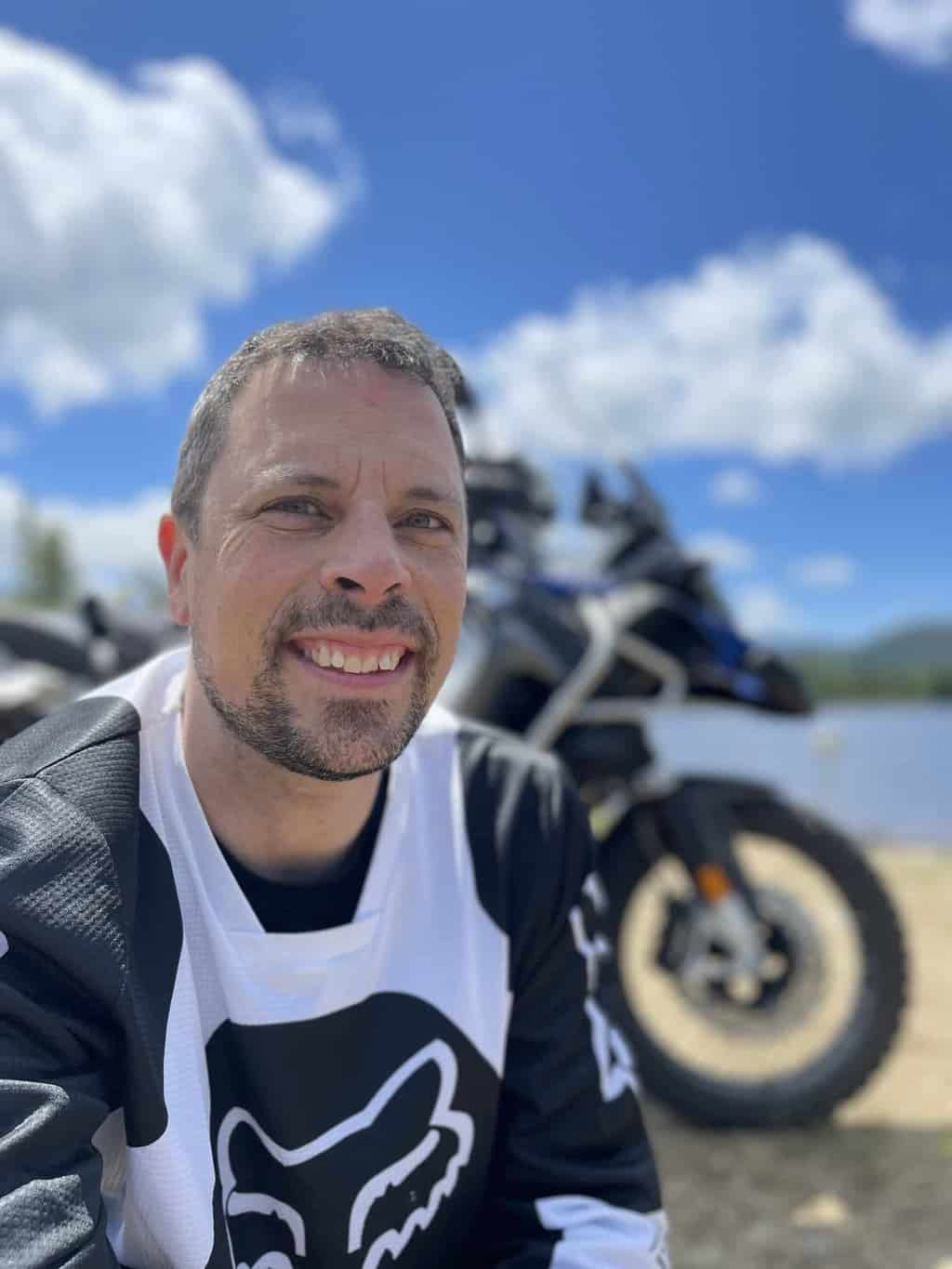Running out of fuel is an unpleasant experience, to say the least. While with other motor vehicles like cars, for example, things can be a little different since they do not refuel as often, motorcycles do need to be refueled more frequently.
This inevitably means that motorcyclists are at a higher risk of running out of fuel in the middle of the road or at least somewhere, far away from any gas stations. Nobody likes to run out of gas on their motorcycle, and it is normal for some riders to be very anxious or paranoid about running out of gas and getting stranded on the side of the road.
Table of Contents
So let’s take a look at the best tips and tricks to ensure you don’t run out of fuel on your motorcycle.

Don’t run on reserve
Motorcycles usually have a small fuel valve petcock or lever on the side of the fuel tank, which is used to switch between the main fuel tank and the reserve.
Running on reserve all the time is not necessarily a bad thing. Many motorcyclists do it every day. Normally a motorcycle is run on the main fuel tank until it gets low on fuel; this can be indicated when the low fuel light turns on or if there isn’t one when the motorcycle starts to sputter. At this point, motorcyclists should switch to the reserve fuel tank.
Both the main fuel tank and the reserve fuel tank, in reality, share the same container, so you are not switching to an entirely different fuel tank. Because of that, some of the newer riders may be wondering why this differentiation has been made.
Interestingly the reserve fuel tank has been made precisely so that motorcyclists do not run out of fuel in the middle of the road.
Since not all motorcycles have low fuel lights and gauges, the reserve tank serves as a safety net and a reminder that the rider is running out of fuel. As they switch to the reserve, they will know that they still have some fuel in the tank and have to look for a place to refuel.
Because of that, it is not recommended to run on reserve all the time as you will not have that reminder to let you know you are running out of fuel. If you run on reserve all the time when you run out of fuel, you run out of fuel, and that’s it.
This also means that you need to know how long your reserve will last. The distance motorcycles can go on reserve can vary wildly depending on the motorcycle model and type. The reserve on some motorcycles is very tiny and they can go as little as 9 to 15 miles on reserve, which may not really be enough to get you to a gas station.
On top of that, even if you have low fuel lights and fuel gauges, things may not be very different. Even then, it is still recommended not to run on reserve. Here’s why.
Do not rely on the fuel gauges and low fuel lights
Although newer motorcycles are equipped with some technology that either allows the rider to see how many miles they can travel on their current fuel in the tank or simply notifies them as they are running low on fuel, all of these are not 100% precise and reliable.
Many riders can have their low light turn on at different fuel levels, sometimes even a few miles before they run dry.
When it comes to The digital fuel gauges that display the distance you can go till empty are also unreliable.
Overall, fuel gauges should be considered a guideline, not a rule. Understanding their weakness thus can help you to not run out of fuel unexpectedly.
Get to know your motorcycle
In any case, it all comes down to the basics. One of these basics is knowing how much fuel your motorcycle uses and how much fuel you can fit in its tank.
Using how far you have gone and how much fuel you have refueled, you can determine your average fuel consumption. To check the distance of your trip, you can use the trip meter or a GPS.
Get into the habit of tracking your mileage. It is good to know what your average MPG is, which can differ from what the manufacturer has stated.
Of course, this will only be a general guideline and not a concrete number. Your motorcycle’s MPG can drastically change depending on your riding style and ambient conditions. Most motorcycles will usually get better mileage on the highways as opposed to city roads.
In addition to that, knowing how far you have traveled may not always be as easy to figure out as it sounds.
However, having these averages in the back of your mind can help you avoid running out of fuel since, over time, you will get a good feel for how far you can go without running dry.
Find out how far your motorcycle can go on a full tank of gas, and remember to start looking for a gas station when you get 20 to 40 miles below that number, excluding the reserve. That way, even if something goes wrong, you will still have the reserve to rely on.

Plan ahead
There is nothing better than a well-planned trip. If you are going through an area where you have never been to, it is always recommended to plan and map your route before you go.
Typically gas stations are well spaced out, but they may be very sparse in some areas, which is why a good rule of thumb is always to plan your trip. This will keep the number of variables low, which is especially helpful if your motorcycle tends to use more fuel.
Mapping out your route will help you get a clearer picture of when and where you may need to refuel.

Refuel often
When all else fails, just take five at the nearest gas station and refuel. Don’t wait until your motorcycle is running dry to start looking for a gas station to refuel, as this could play you a bad trick. If your fuel is getting low and there is a gas station, take a quick break and refuel.
Refueling often is vital if you are traveling in areas and on roads that you are not familiar with or where there may be fewer gas stations.
Some motorcyclists who don’t have a fuel gauge or low fuel light will simply get into the habit of refueling every time they go out. So there are no real hard and fast rules here.
Carry extra fuel
This may not be a viable solution to most riders; however, it could help many, especially if traveling long distances. And carrying extra fuel is a good idea even for people riding touring motorcycles.
There are a few different ways motorcyclists can carry extra fuel on their motorcycles using durable fuel storage containers, small fuel cans, aluminum fuel bottles, fuel bladders, or auxiliary fuel tanks.
In some cases, you can carry enough fuel to fully refuel your fuel tank. But at the very least, carrying a small fuel can on your motorcycle is highly recommended—especially if you are in an area where you are pretty far from gas stations.
Some riders will even use plastic bottles to hold fuel, but keep in mind that this is not considered a safe and legal way of storing fuel.
Carrying extra fuel is a great way to ensure that you’ll have enough fuel in case something goes wrong and you run out of fuel, and there is no gas station nearby. However, this does involve investing in extra motorcycle equipment.
In some instances, this can also be achieved by retrofitting a fuel tank with extra capacity. However, this does involve a good deal of research as your options may or may not be very limited depending on your motorcycle type and model.
This, however, does not mean you should fill up your motorcycle fuel tank to the brim. Overfilling your motorcycle fuel tank is possible and should be avoided as it can cause some unexpected problems.
Keep in mind that sometimes there can be some extra amount of fuel left in the corners of the fuel tank, so jiggling the fuel tank a bit can give you a few extra miles in a pinch.
FAQ’s
- Is it common for motorcycles to run out of fuel?
- This question addresses a common concern among new motorcycle owners. It explains that motorcycles typically need to be refueled more often than cars and discusses the anxiety and risks associated with running out of fuel on a motorcycle.
- How can I prevent running out of fuel on my motorcycle?
- This question provides a comprehensive list of tips and tricks for avoiding the dreaded experience of running out of fuel on a motorcycle. It covers important strategies such as not relying solely on the reserve tank, understanding the limitations of fuel gauges and low fuel lights, getting familiar with your motorcycle’s fuel consumption, planning your rides ahead, refueling regularly, and considering carrying extra fuel.
- Can I rely on the reserve tank all the time?
- This question addresses the misconception of relying on the reserve tank consistently. It explains the purpose of the reserve tank as a safety net and emphasizes that it’s not recommended to run on reserve all the time. It also highlights the importance of knowing how far your reserve will last.
- How can I carry extra fuel on my motorcycle?
- This question provides information on carrying extra fuel on a motorcycle, including various options such as durable fuel storage containers, small fuel cans, aluminum fuel bottles, fuel bladders, or auxiliary fuel tanks. It explains the benefits of carrying extra fuel for longer rides and remote areas, while also cautioning against unsafe methods of storing fuel. It also briefly touches on retrofitting fuel tanks for extra capacity.

Meet Simon, the 46-year-old aficionado behind YourMotoBro. With a lifelong passion ignited by motocross dreams and a Canadian Tire bicycle, Simon’s journey has been nothing short of extraordinary. From coaching underwater hockey to mastering muddy terrains, he’s an authority in thrill and adventure. Certified as an Off-Road Vehicle Excursion Guide and trained in Wilderness First Aid, Simon’s love for bikes is as diverse as his collection—from a robust BMW GSA R1200 to the memories of a Harley Davidson Night Train. By day a respected telephony consultant, by night a motorcycle maestro, Simon’s tales are a blend of expertise, resilience, and undying passion. ?️✨